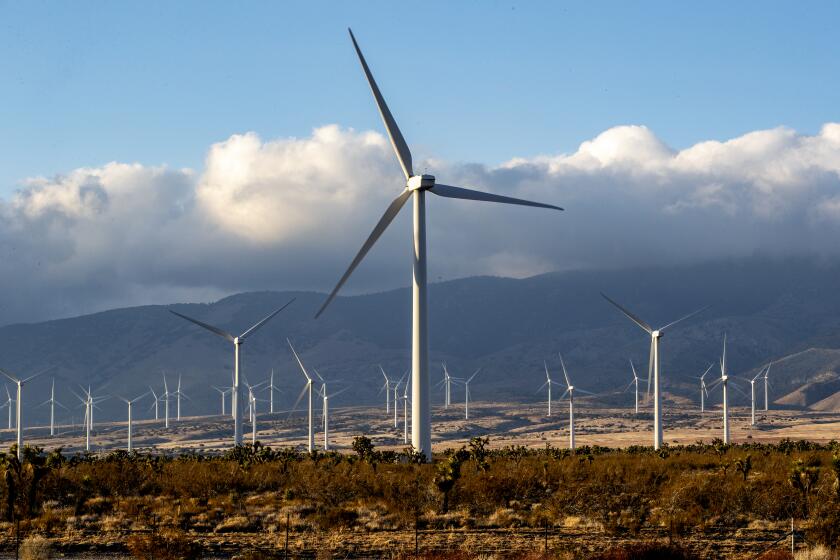A Chumash tribe and conservationists are fighting a controversial offshore wind power plan
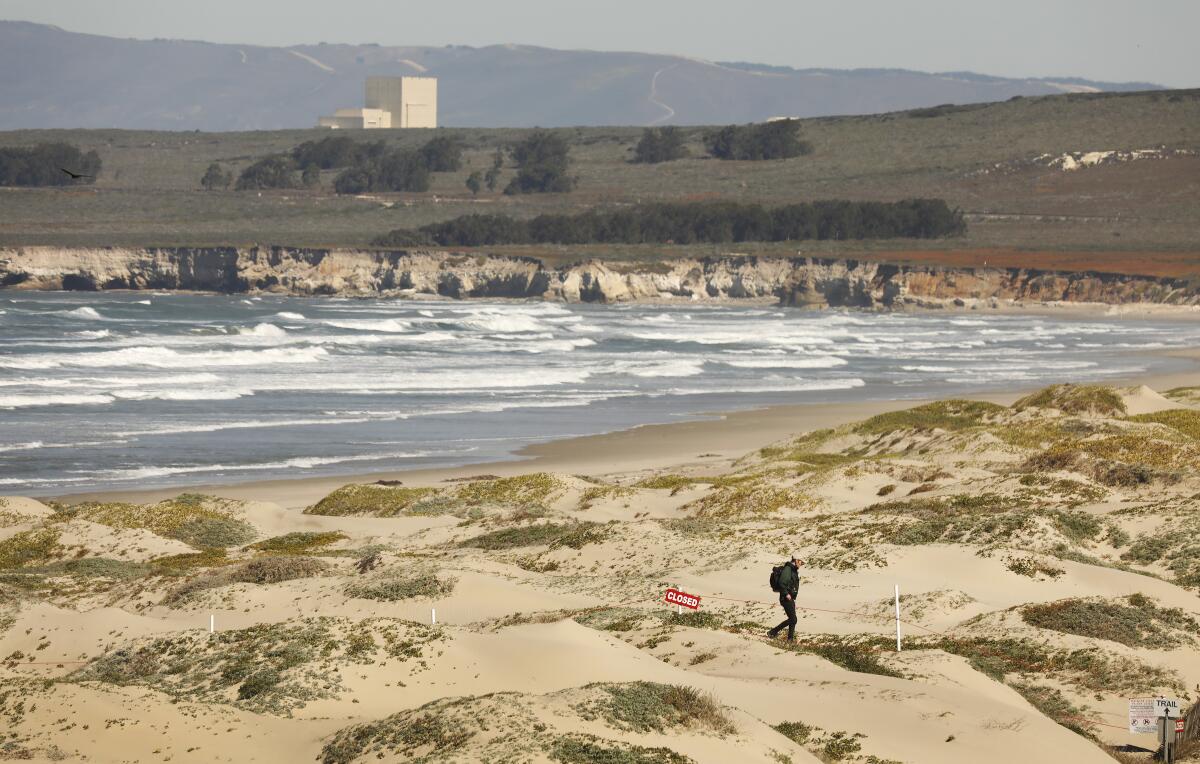
LOMPOC, Calif. â Along the wind-blasted shores of the Gaviota Coast, near the rocket gantries of Vandenberg Space Force Base, lazy breakers claw at the base of sandy bluffs and dunes, while farther out to sea, great white sharks cruise beneath churning whitecaps.
Itâs a stunning and uniquely Californian vista, a place where pristine headlands overlook the submerged remains of sacred Chumash villages and launchpads fire the nationâs newest and most secret technology into orbit.
For the record:
4:00 p.m. April 25, 2022This article reported incorrectly that wind power proposals submitted by Cierco Corp. and Ideol USA were part of a single project or joint venture. Ciercoâs CADEMO project and Ideolâs wind turbine proposal are two independent projects. It also reported incorrectly that the CADEMO project would consist of four 330-foot-tall wind turbines. The hub height of the turbines would reach 451 feet, according to the projectâs website.
But in recent months, this stretch of the Santa Barbara County coastline has become a bitter collision point for several national and global imperatives â the reduction of planet-warming greenhouse gasses, the conservation of natural habitats and the atonement for injustices committed against Indigenous populations.
A plan by private corporations to float up to eight wind power generators less than three miles offshore has run headlong into efforts to designate a vast area of ocean off the Central Coast as a Chumash Heritage National Marine Sanctuary.
The turbine proposal has sparked outrage among conservationists and members of the Northern Chumash Tribe, who say the sanctuary is intended to preserve Chumash tribal history and protect the areaâs rich biodiversity. Building a network of floating turbines that are tethered to the seafloor and connected to one another and the mainland with electric cables is an affront to preservation, they say.
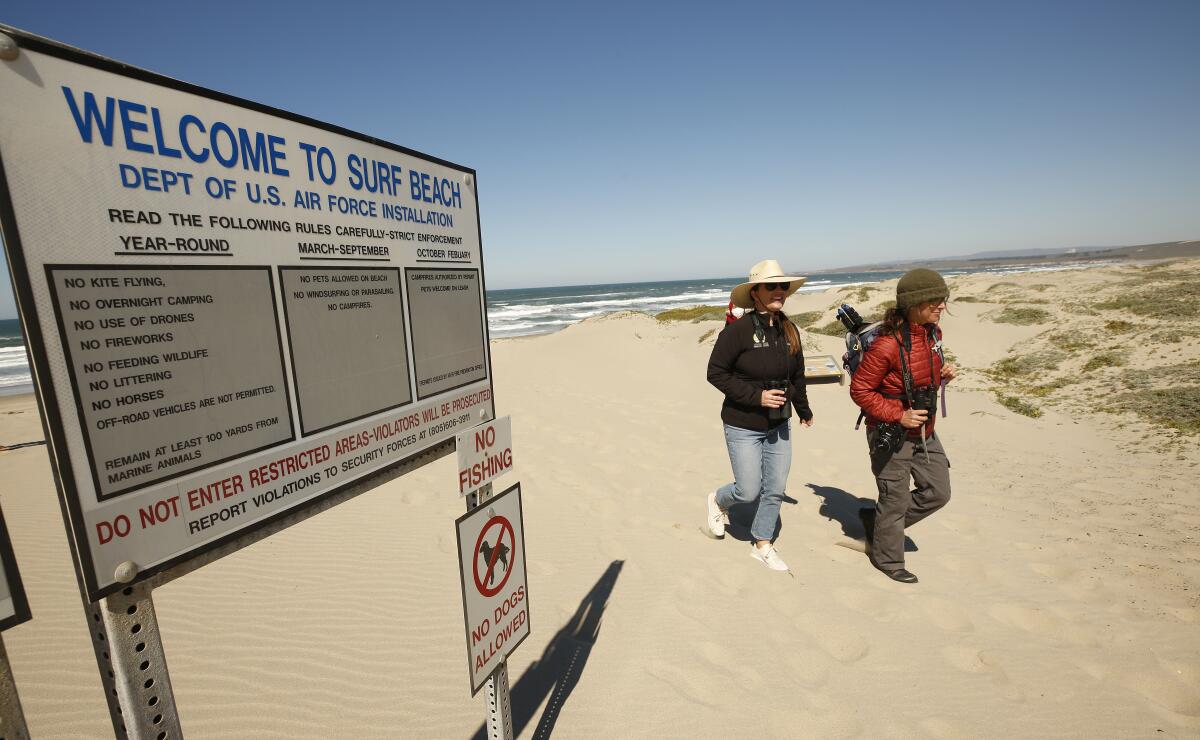

âI have been working to create this tribal sanctuary day and night for 10 years,â said Tribal Council Chairwoman Violet Sage Walker. âThereâs no way that windmills there will ever swing their blades out there.â
The marine sanctuary is the first ever to be nominated by a Native American tribe and is under consideration by the National Oceanic and Atmospheric Administration. Proponents say its approval would help preserve the Chumash peopleâs oceangoing heritage, while also maintaining access for commercial and recreational fishing. By helping to sustain a rich ecosystem, they say, it would also support President Bidenâs â30 by 30â goal, or protecting 30% of lands and ocean territories by 2030.
The nominated area stretches along 140 miles of coastline â from an area near Cambria, in San Luis Obispo County, south to Gaviota Creek, in Santa Barbara County â and encompasses 7,670 square miles. It would extend offshore more than 70 miles in some areas, and include shipwrecks, kelp forests, underwater canyons and a seamount that rises more than a mile above the ocean floor.
âIt will protect ocean life, sacred Chumash sites, strengthen Indigenous sites and serve as a model for environmental justice,â Sage Walker said. âIt will also change the way the whole world understands us.â
However, applications have been submitted by Cierco Corp. and Ideol USA to the State Lands Commission for leases to install up to eight floating wind turbines in state waters about 2 œ miles offshore, and within the boundaries of the Chumash marine sanctuary.
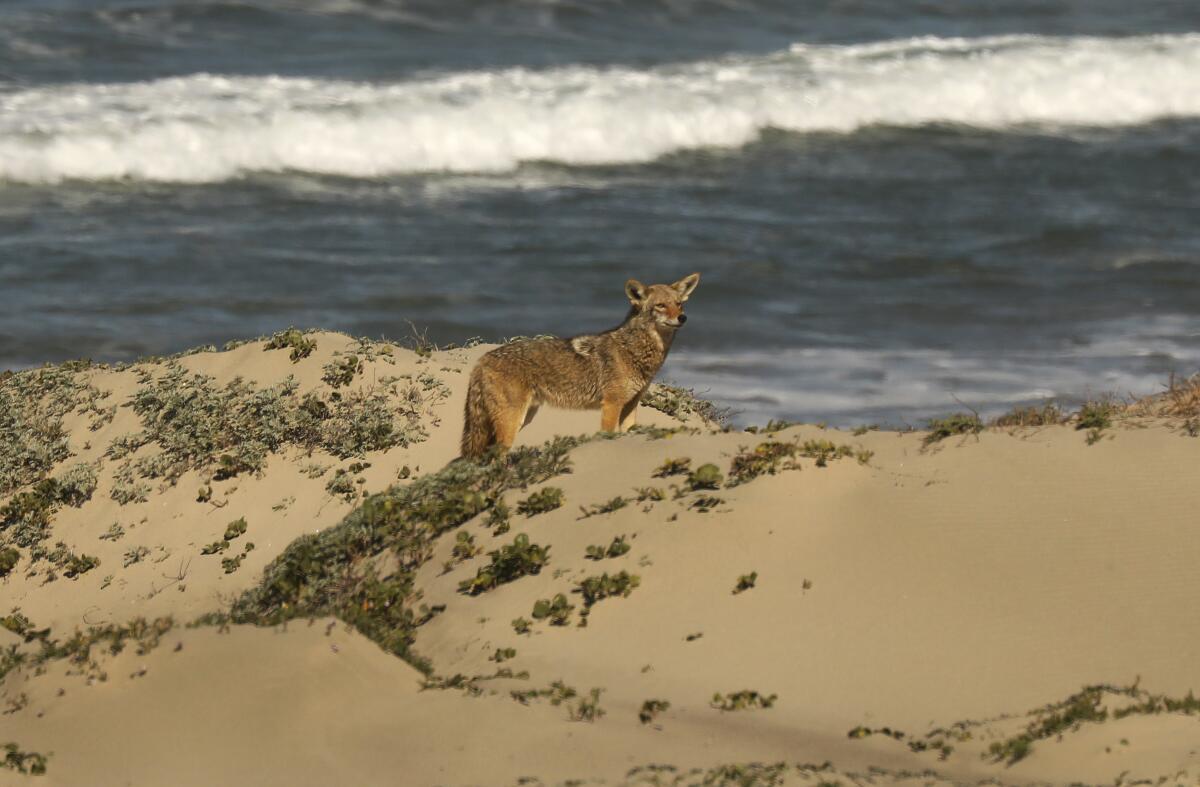
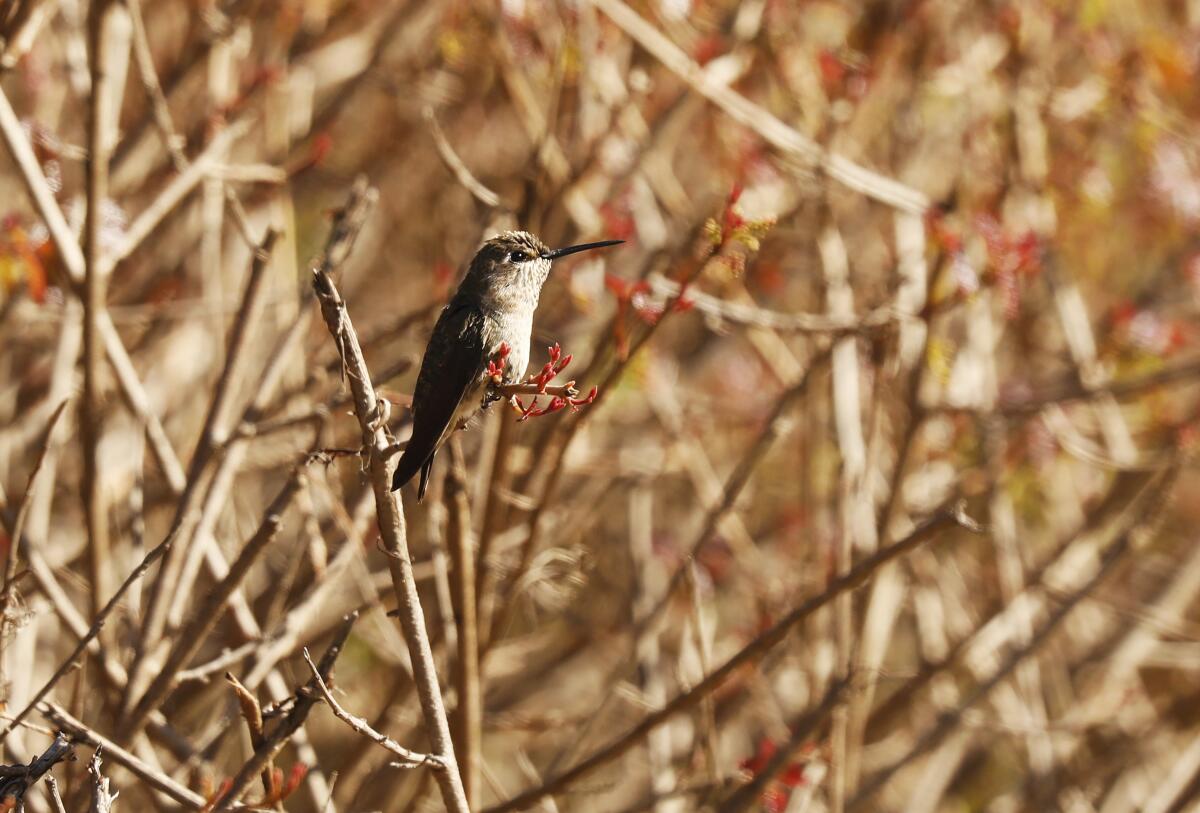
The joint ventureâs goals include studying the turbinesâ effects on birds, bats, fish, dolphins, and federally endangered whales and leatherback turtles, and âkick starting the emergent marine renewable energy sector off the west coast of the United States.â
Ciercoâs proposal, which is called the CADEMO project, would consist of four 330-foot-tall wind turbines capable of supplying 60 megawatts of renewable energy by 2026 â enough power to supply 21,500 homes, according to documents filed with the lands commission.
Ideolâs portion of the project would consist of up to four turbines that could generate a total of 40 megawatts of power, according to applications filed with the state.
Because of the extreme depth of nearshore waters along the West Coast, the turbines must be built on floating platforms or concrete barges that are moored to the seabed. Power from the wind generators would be delivered to Vandenberg via buried electric cables.
Data generated by the project, its developers say, could also be used in the development and construction of far larger wind farms proposed in federal waters, about 20 miles off the stateâs central and northern coasts, under permits issued by the Bureau of Ocean Energy Management.
The federal proposals, which are supported by Gov. Gavin Newsom and the Biden administration, include floating 380 wind turbines across a nearly 400-square-mile patch of sea northwest of Morro Bay. If all goes according to plan, it would operational by 2032.
âWe plan to build a small-scale demonstration project to generate important information for the bigger projects,â said Mikael Jakobsson, Ciercoâs founder and managing director.
Jakobsson acknowledged there was resistance to the proposal. âEven some colleagues in our industry donât think this project should happen,â he said. âThatâs because it might generate data about environmental impacts that could have a negative impact on the bigger projects in federal waters.â
In the meantime, neither Vandenberg nor the Bureau of Ocean Energy Management has formally expressed an interest in the electrical power or research data the project would generate. Beyond that, Cierco and Ideol are not members of Offshore Wind California, a group of developers and technology firms dedicated to responsible development of offshore wind power for the state.
That worries tribal leaders, regulatory agencies and environmental groups. The proposed marine sanctuary would encompass a delicate transition zone where nutrient-rich upwellings sustain a remarkably diverse aquatic food chain that includes whales, dolphins, sea otters, lobsters and commercial fisheries.
Critics of the wind turbine proposal include tribal leaders, the California Coastal Commission, NOAA, the Pacific Coast Federation of Fishermenâs Assns., the Alliance of Communities for Sustainable Fisheries and a coalition of environmental groups led by Defenders of Wildlife, the Monterey Bay Aquarium, the Surfrider Foundation, Sierra Club California, the Natural Resources Defense Council, the Center for Biological Diversity and the Environmental Defense Center.
The White House said the proposal would supply enough electricity for 1.6 million homes, but major engineering challenges and other obstacles remain.
The Biden administration a year ago, however, announced plans to speed up development of offshore wind farms to create 30 gigawatts of renewable energy by 2030 â enough to power more than 10 million homes â while also investing $230 million in related port improvements and making $3 billion in loans available to the offshore wind power industry.
The plan would also create 44,000 jobs and help speed up our conversion from fossil fuels to renewables.
On a recent morning at Lompocâs Surf Beach, a group of conservationists gathered on a hill to soak up the springtime scenery between Vandenbergâs no-trespassing signs. As the Santa Ynez River spilled out of a nearby estuary into coastal waters, Annaâs hummingbirds hovered over bright yellow giant coreopsis flowers. Snowy plovers, a species of special concern, scouted nesting sites and chased moving feasts of insects and crustaceans at the waterâs edge.
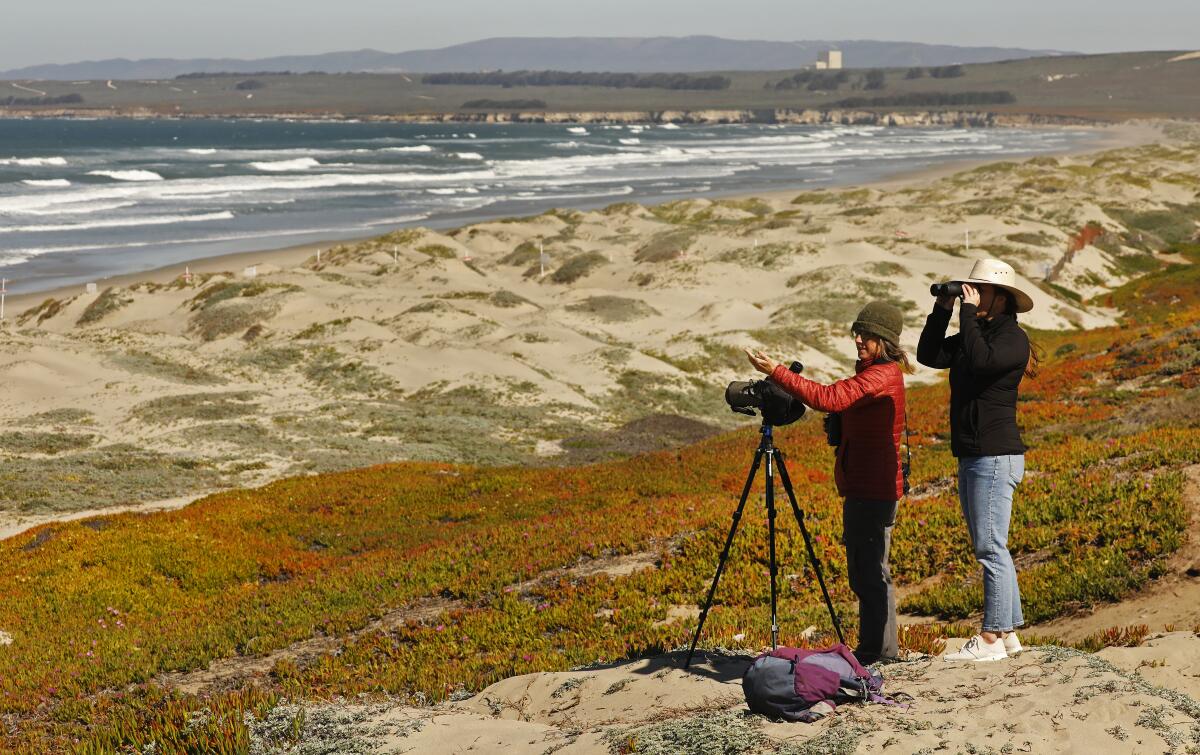
Jessie Altstatt, a marine biologist and co-chair of conservation for the Santa Barbara Audubon Society, grumbled to herself as she peered through a pair of binoculars. âItâs ludicrous for wind energy developers to suggest they will be able to keep track of the numbers and species of birds slammed into the sea by turbine blades before they are swept away by currents or devoured by sharks.â
Kristen Hislop, senior director of the Environmental Defense Centerâs marine program, wondered aloud: âCan you imagine a worse place to install a giant wind farm?â
But not everyone agrees.
Benjamin Ruttenberg, director of coastal marine sciences at Cal Poly San Luis Obispo, sees value in the proposal.
âAs a scientist, Iâm very interested in any data generated by a wind energy project off Vandenberg,â he said. âItâs an opportunity to inform offshore energy projects along the entire West Coast of the U.S.
âOf course, we shouldnât let the developers or their consultants do the monitoring,â added Ruttenberg, whose department has received funding from the Bureau of Ocean Energy Management for six years. âInstead, the companies should put funding for scientific research into a trust fund.â
Sage Walker suggested there is more at stake.
âOur histories begin and end on this coastline for time immemorial,â she said. âThe developersâ proposal is something new, opportunistic and absurd, yet they keep pushing it.â
